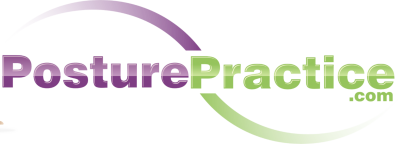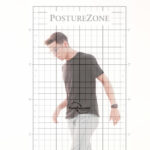Posture Matters: Exploring the Relationship between Proper Alignment, Pain Management, and Medication Strategies for Improved Health and Well-Being
Proper posture alignment plays a critical role in musculoskeletal health, pain levels, quality of life, and even medication needs. However, with increasingly sedentary lifestyles, poor posture is becoming endemic.
This article explores the causes of poor posture, negative health consequences, methods for assessing misalignments, non-medical realignment strategies, when to see a specialist, and key takeaways for improving posture and wellness.
Causes of Poor Posture
As children, we are often reminded to “sit up straight.” However, as we age, we fall into bad habits. Common causes of poor posture include:
Sedentary Lifestyles
With growing reliance on computers, tablets, and phones, we spend hours hunched over devices with heads tilted forward. Prolonged bad alignments cause the muscles and ligaments to shrink and weaken, perpetuating bad posture.
Improperly Designed Workstations
From school desks to kitchen countertops to computer workstations, designs demanding awkward postures for hours daily eventually cause the body to become fixed in misalignment. Musculoskeletal pain often results.
Poor Sleep Positions
We spend about a third of our lives sleeping. Poor sleep postures—especially stomach and certain side positions—can stress the spine and joints, leading to chronic pain over time. The right mattress design and support are essential.
Consequences of Poor Posture
Poor posture doesn’t just look bad—it brings significant health problems. Common effects include:
Head, Neck, and Shoulder Pain
Head forward/downward tilt is a hallmark of modern posture misalignment. Neck muscles and joints are forced to bear extra weight, leading to muscle strain, disc compression, arthritis, headaches, and pain. Shoulders rounded forward increase injury risks.
Back Pain
Spinal curves out of proper alignment change weight distributions and equilibrium on the vertebral column. Asymmetrical forces lead to early degenerative changes in the discs and facet joints—and chronic low back pain.
Breathing and Digestion Issues
Ribcage misalignment can impede deep full breaths. Pressure on the abdomen alters digestion. Heartburn, bloating, constipation, and cramping can result.
Fatigue and Sleep Disorders
Poor posture-related pains and restricted breathing hamper restful sleep—leading to chronic fatigue.
Higher Medication Use
The cascade of pain, inflammation, and loss of function often leads patients and doctors to rely increasingly on pain medications, injections, and even surgeries—rather than addressing root posture causes.
Assessing Your Posture and Misalignments
Performing regular posture self-assessments is an important step in determining muscle imbalances or asymmetries needing correction. If available, seeing a specialist for screenings every few years can identify postural dysfunction before injuries or pain starts. Catching problems early saves health decline later.
Some signs to assess include:
Forward Head Position
A frequent computer user may recognize the “tech hunch” posture with the head poked forward and chin uptilted. Measure your posture to determine if realignment is needed.
Rounded Shoulders
With arms at the sides, check the positions of shoulder blades. Uneven resting levels or shoulder blade “winging” indicates muscle tightness or weakness to address.
Curving Spine
Have someone assess curves along your spine from both sides and back. An unnatural S-curve or leaning to one side signals problems.
Pelvic Tilt
Stand straight against a wall. Without changing the lower back position, tilt the top of the pelvis forward and note changes this makes to the back position. Muscle tightness causing anterior pelvic tilt can flatten lumbar spine curves.
If self-assessments reveal multiple areas out of alignment—especially if experiencing discomfort—getting evaluated and treated by a physical therapist or chiropractor to restore positioning may be warranted.
Non-Medical Strategies for Improving Posture
Many effective options exist beyond pain medication or surgery for bringing musculoskeletal alignment back into proper balance. Depending on your needs, these may include:
Posture Re-training Exercises
Specific movement therapies—Yoga, StrongPosture Exercise, Foundation Training, Egoscue Method—strengthen muscles in shortened/weakened areas and stretch tight aspects. Consistency is key for lasting improvements.
Massage Therapy
Massage loosens tight muscle groups pulling bones out of ideal alignment while also relaxing the mind-body for posture awareness. Targeted therapy works best.
Chiropractic Care
Gentle, customized chiropractic adjustments unlock stuck joints that may be jamming nerves and pulling the frame misaligned. Supportive treatments teach better daily postural habits.
Physical Therapy
Prescribed exercise programs rebuild posture foundations. Therapists analyze gait/movement patterns and teach techniques like the Alexander Method for maximizing body mechanics.
Ergonomic Modifications
Improving workstation/computer/desk designs enhances usability. Chairs supporting the lumbar spine, keyboard trays lifting arms, and monitors at eye level all benefit posture. Consult an occupational therapist.
Seeing a Posture Practitioner
Those experiencing acute or worsening chronic pain and dysfunction impacting their quality of life should consult posture practitioners for individualized treatment plans. These may include:
Physiatrists
These rehabilitation physicians conduct specialized testing to diagnose specific musculoskeletal imbalances creating pain and instability. Tailored physical therapy plans follow.
Osteopaths
Via techniques optimizing skeletal alignment and release of tight structures, osteopaths improve positional symmetry and movement freedom—often eliminating pain without drugs when caught early.
Rolf Practitioners
Rolfing utilizes hands-on tissue manipulation to relieve myofascial binding and scar tissue adhering joints out of place. Gentle pressures progressively align connective tissues for freer movement.
Medication Strategies and BuzzRx Prescription Savings
While non-medical strategies should be the first line of defense for postural misalignments and musculoskeletal pain, medications are sometimes needed to provide sufficient relief. Common medication categories prescribed include:
Anti-inflammatory Drugs
Nonsteroidal anti-inflammatory drugs (NSAIDs) like ibuprofen and naproxen can help reduce inflammation, pain, and swelling from postural strains or injuries.
Pain Relievers
Acetaminophen and certain opioid medications may be used for more severe, acute pain flare-ups until alignment can be restored through conservative care.
Muscle Relaxants
Drugs like cyclobenzaprine temporarily relax tense, contracting muscles that could be pulling the skeletal frame out of alignment and causing pain.
Seeking cost-effective prescription options is important, as chronic musculoskeletal issues often require long-term medication use. BuzzRx prescription savings can help by providing free pharmacy discount cards to reduce out-of-pocket costs on many commonly prescribed pain relievers, anti-inflammatories, and muscle relaxants when paying cash.
Key Takeaways on Posture
As everyday poor posture patterns become habitual and alter musculoskeletal balance over the years, pain and degeneration often result. Prioritizing better alignment saves health. Key takeaways include:
Assess Frequently
Perform regular checks for posture deviation indicators through self-screening or specialists. Early identification allows simpler corrections before injuries and medicating begin.
Address Sedentary Lifestyle
Cultivate consistent movement breaks every 30-60 minutes from sitting. Gentle stretches, ambulation, and active workstations all integrate easily without productivity losses.
Improve Ergonomics
Ensure your workstation, car seat, mattress, and home furniture enable neutral spine postures. This takes continual conscious re-adjusting. See an occupational therapist for input.
Practice Healthy Sitting
When seated, ensure hips/knees are at 90-degree angles, feet flat to the floor, lumbar spine supported in a natural curve, and shoulders back without elevation. Sit actively tall.
Develop a Therapeutic Plan
Work with specialists in conservative care like massage, chiropractic, physical therapy, and osteopathy tailored to your specific posture issues and pain patterns when self-care falls short. Doing so can help avoid medication over-reliance down the road.
Commit to Ongoing Alignment
Whether certain exercises, regular massages/adjustments, lifestyle modifications, or postural habit changes—embrace whatever helps you sustain improved posture and body mechanics long-term. Your future self will thank you!





















